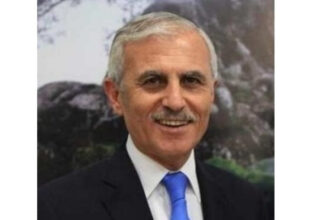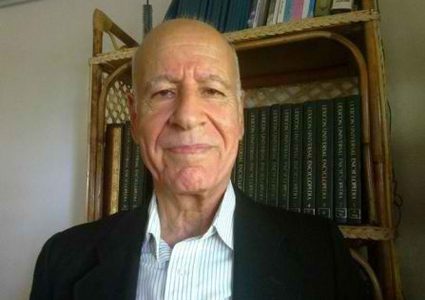Now it’s the mediators’ turn
Al-Khamisa News Network - Gaza

Author: Rajab Abu Sariya
After the two warring parties — Israel and Hamas — reluctantly accepted the agreement under the Trump plan, and after pressure was exerted on both sides (the Israeli side by the US president and Hamas by Qatari and Turkish mediators), because both found in the plan’s provisions not only broad lines but also substance beneath the slogans they had raised or the conditions and demands they had repeatedly declared — demands that mediators themselves always described as forming a difficult gap, especially regarding the day after the end of the war. Although both sides considered the Trump plan insufficient to meet all their aims, each saw in the implementation of the first phase elements that corresponded to their demands, even if they were contradictory. For this reason the mediators decided to start with a hostage-prisoner exchange deal — the easier file — and to transfer, rather than postpone, other files related to the post-ceasefire period to another dialogue, so as to escape the deadlock and the negotiating impasse. This followed Israel’s reckless step of bombing Doha, Qatar, in an attempt to assassinate the Hamas negotiator — a clear sign that Netanyahu wanted to shut the negotiating track completely and continue the war indefinitely.
It was clear that the US prioritized the release of hostages, partly to push Trump’s chances toward a Nobel Prize and partly because this represented the demand of more than half of Israelis and their sympathizers, while a ceasefire was the Palestinian and Arab demand — indeed the demand of the whole world. Thus everyone quickly agreed to a deal: a ceasefire in exchange for freeing the hostages. To avoid appearing otherwise, especially for Benjamin Netanyahu, who has feared for two years to announce an explicit halt to the war lest his ruling coalition collapse, the first phase of the plan called for releasing living and dead hostages in return for a halt to hostilities, the release of 250 Palestinian prisoners sentenced to life, plus roughly 1,700 detainees from Gaza held during this war, and the entry of humanitarian aid. This in itself is a deal that alleviates Gaza’s suffering; releasing prisoners serving life sentences helps justify, for Hamas, its military gambit on October 7, while on the other side it reduces global pressure on Israel, which has become thoroughly ostracized because of its continued campaign of annihilation in the Gaza Strip.
What comes after that — the post-first-phase files — is no longer primarily for the two warring parties, not because they will lack enthusiasm to continue, but because the post-deal issues are numerous, regional in nature, and directly contrary to the interests of both Hamas and Israel. A quick review of those files confirms this. Israel does not want the Palestinian Authority to return to govern Gaza, because this would mean the practical failure of what the Israeli right, led by Benjamin Netanyahu, has sought for three decades: blocking the emergence of a unified Palestinian state on the 1967 borders that would include the West Bank, Jerusalem and Gaza. Netanyahu opposes handing Gaza to the Palestinian Authority even more than he opposes continued Hamas rule. Hamas, meanwhile, says under pressure that it accepted stepping down from governing Gaza because it bets that all other options will fail as long as Israel refuses to cede Gaza to the PA. Indeed, the first days of the ceasefire showed how Hamas police rushed to fill the vacuum and act as the de facto authority, immediately moving to crush the militias that had formed on the ground, especially in the north of the Strip.
In other words, the day after arrived as soon as the shooting stopped and as soon as the Israeli army redeployed according to the yellow-line maps. That means remaining at the limits of phase one: Israel achieved a half victory, in that it did not achieve the overwhelming victory Netanyahu had promised — the five aims he cited, including crushing Hamas and disarming it — while Israel’s failure was evident in the collapse of the displacement objective that even Trump had mentioned. Trump, as guarantor, signed the peace document in Sharm el-Sheikh and pushed matters toward a reality in which Gazans return to their destroyed homes but do not leave the Strip. Hamas’s half victory is visible in several ways: foremost, it remained a negotiating party until the last day of the war and forced Israel into a multi-faceted deal on the Palestinian side in exchange for the implementation of a single Israeli demand — the release of living hostages — while the bodies of dead hostages are handed over in installments.
The most visible of these signs now is the public reappearance of Hamas police and municipal authorities opening roads, removing rubble and organizing the return of people to their cities, towns, camps and neighborhoods, and moreover imposing military authority on those who broke obedience to them. There is no doubt that Israel and the US have retreated from many of their earlier impositions, such as establishing a US aid center and channeling aid exclusively through it; that task has now been given to the United Nations and the Red Cross. Yet Israel’s retention of around half of the Strip’s territory amounts to half an occupation — a cheap occupation because that strip is largely empty of population. In short, stopping at the limits of phase one is catastrophic, even though it is the preferred option of both warring parties, Hamas and Israel.
Halting at phase one means that more than two million people will live in an environment that is no longer habitable. There is much evidence for this: estimates indicate some 50 million tonnes of rubble that would take 20 years to clear; around 100,000 tonnes of explosives were dropped, in addition to what was killed and destroyed, much of which did not detonate and therefore poses a grave danger. There are damaged infrastructure and psychological trauma, and people are forced to live outdoors with the coming winter. In short, Gaza in this state is a burden on any authority unless it receives external support through rapid reconstruction, together with community rehabilitation. There is an urgent need for external assistance for rebuilding, and for the Palestinian Authority to help repair society, restore Palestinian unity and instill hope for freedom and independence among its people after all the suffering they have endured.
Keeping Gaza in its damaged state pleases Israel because it means Gaza will not constitute a viable state; Gaza as a burden would weigh down the Palestinian state project, while a healthy Gaza would be a lever and a source of strength. As President Mahmoud Abbas has repeatedly said, ‘there is no state in Gaza, and no state without Gaza’ — not only because Gaza and the West Bank form the two wings of the Palestinian homeland, but because the West Bank alone is an inland territory with no maritime border. Gaza, besides its Marina gas — which could be a key element of the Palestinian state’s budget — could be developed for tourism, which is what made Trump fantasize about an ‘East Mediterranean Riviera.’ Gaza could also become a port for exporting Gulf gas and oil to Europe. But Gaza alone cannot be a state: it is a very narrow strip, bursting with population. The establishment of a Palestinian state presupposes a place to accommodate the millions of Palestinian refugees in neighbouring countries and in exile.
For all these reasons, we believe the mediators were shrewd — not only in persuading Hamas that the war would stop after the release of the hostages, but because everyone realized that Netanyahu’s war had become a campaign to reshape the Middle East according to the dreams of the Israeli right. That is why Cairo insisted on launching the peace conference in Sharm el-Sheikh and would not be satisfied with Trump’s slogans about not stopping at Gaza and pushing for a regional peace. The conference was attended by more than thirty Arab, Islamic, Middle Eastern and international countries and organizations, co-chaired by Egypt and the United States, and it ended not with a celebratory note but with an affirmation that the decision to stop the war was no longer in Netanyahu’s hands — nor even in Trump’s — but had become the core and title of the agreement and plan. Hence the peace document at the end of the conference, signed by the leaders of the US, Egypt, Qatar and Turkey, indicating that these countries decided to stop the war and are its guarantors. In this context there is talk of preparing a Palestinian police force in Egypt and sending Turkish emergency experts to the Gaza Strip.



